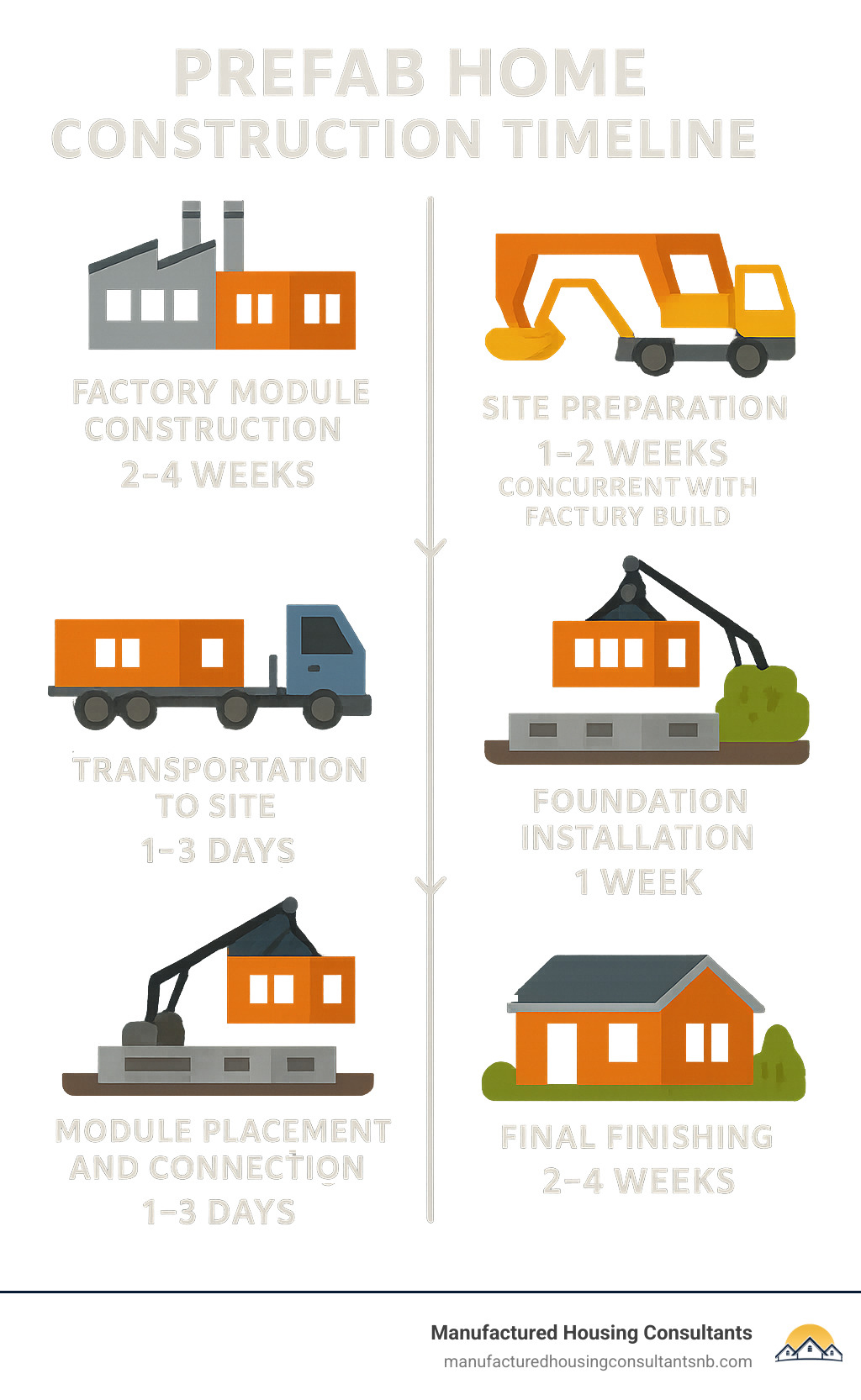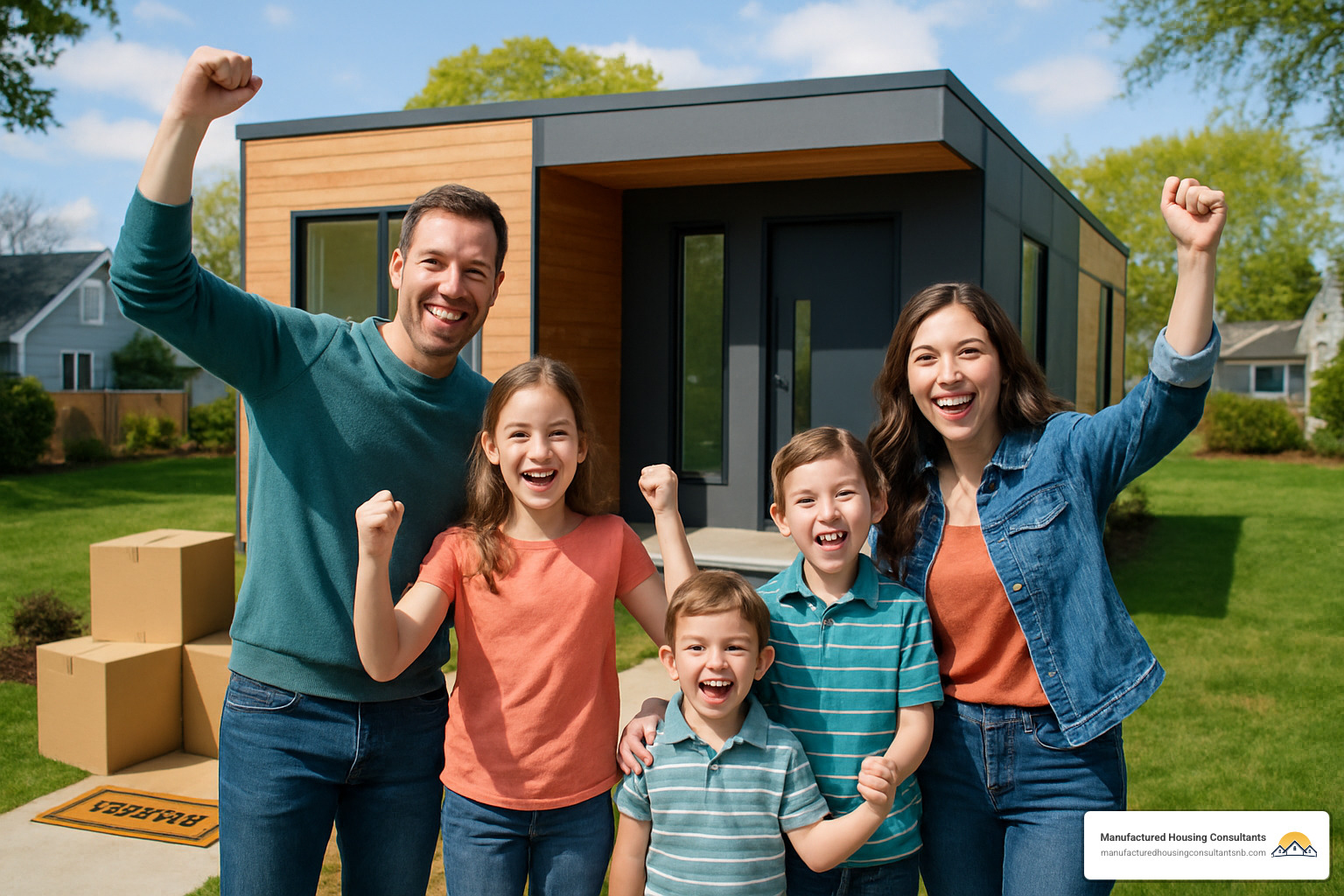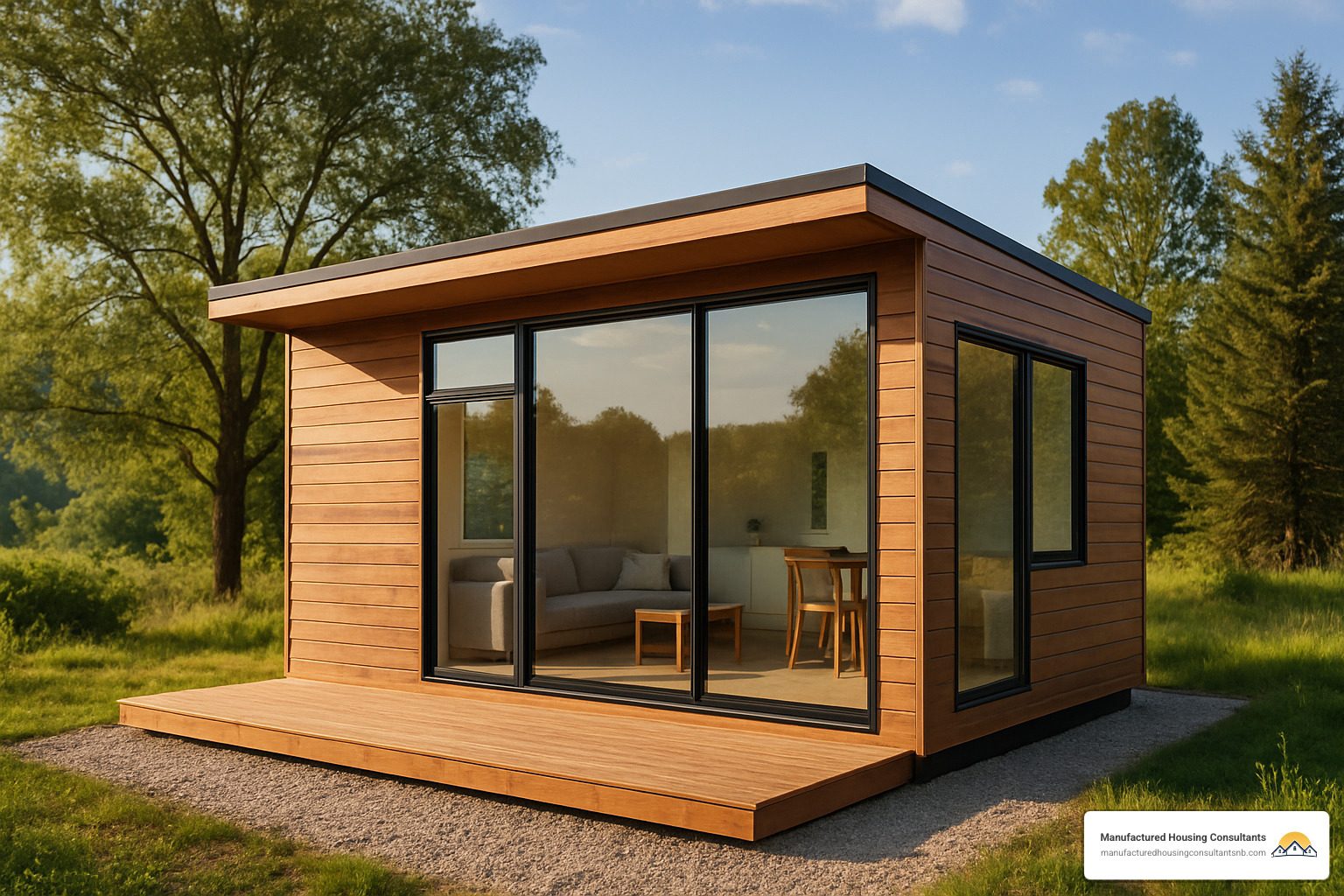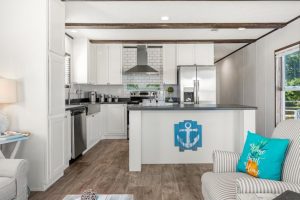7 Common Questions About Inexpensive Prefab Homes Answered
Discover answers to 7 common questions about inexpensive prefab homes, including costs, benefits, styles, installation, and more.
The Affordable Housing Revolution: Prefab Homes Explained
Inexpensive prefab homes are factory-built houses constructed in sections off-site, then transported and assembled at their final location. These affordable housing solutions typically range from $7,500 to $35,000 for basic models, with larger modular homes starting around $50,000 to $200,000.
| Quick Facts: Inexpensive Prefab Homes |
|---|
| Price Range: $7,500-$35,000 (basic); $50,000-$200,000 (larger modular) |
| Build Time: 3-6 months total (vs. 12+ months for traditional construction) |
| Size Options: 400-2,400 square feet |
| Types: Tiny homes, container homes, modular homes, panelized systems |
| Energy Savings: Up to 30% lower utility costs with proper insulation |
Driving by a construction site, you’ve likely noticed dumpsters overflowing with scrap wood and materials. This waste represents both environmental harm and your money being thrown away. That’s where prefab homes shine.
“Today’s prefab homes offer a perfect blend of style, durability, and high performance,” notes one industry expert. These homes are changing housing affordability while reducing the estimated 15% of construction materials that typically end up as waste in traditional building.
For Sarah and many Texans like her, the traditional path to homeownership feels increasingly out of reach. Rising construction costs, lengthy build times, and strict financing requirements create barriers that seem impossible. Prefab homes offer a practical solution with faster build times, predictable pricing, and often more flexible financing options.
Factory-built in controlled environments, these homes avoid weather delays and benefit from precise material calculations. The result? Higher quality at lower costs, with some models delivered up to 90% complete and ready for quick installation.
Whether you’re looking for a tiny starter home under $20,000 or a full-sized modular dwelling with all the amenities of a traditional house, the prefab market offers options that can make homeownership accessible without breaking the bank.

Related content about inexpensive prefab homes:
Answers to Your Top 7 Questions About Inexpensive Prefab Homes
Ever feel like the traditional path to homeownership is slipping away? You’re not alone. Here in Texas and across the country, folks are finding a refreshing alternative that won’t break the bank. At Manufactured Housing Consultants in New Braunfels, we’ve watched the growing excitement around inexpensive prefab homes as more people find this affordable route to homeownership.

The charm is obvious – precision factory building, dramatically faster completion times, and often a much lighter hit to your wallet compared to traditional construction.
| Traditional vs. Prefab Construction Comparison | |
|---|---|
| Cost Per Square Foot | Traditional: $150-$250+ / Prefab: $90-$160 |
| Construction Timeline | Traditional: 9-18 months / Prefab: 3-6 months |
| Weather Delays | Traditional: Common / Prefab: Minimal (factory-built) |
| Material Waste | Traditional: ~15% / Prefab: ~2% |
| Energy Efficiency | Traditional: Variable / Prefab: Consistently high |
| Quality Control | Traditional: Varies by contractor / Prefab: Standardized |
What Is a Prefab Home and How Does It Differ From Site-Built Construction?
“Prefab” simply means your home is built in sections inside a factory before being transported to its final location for assembly. This creates several advantages over homes built entirely on-site.
Prefab homes come in several varieties:
Modular homes are built in sections at the factory, then assembled on a permanent foundation. These meet the same local building codes as site-built homes.
Manufactured homes (formerly called mobile homes) are built on a permanent chassis according to federal HUD Code. They range from single-wides (400-1,330 sq ft) to spacious double-wides (1,100-2,400 sq ft).
Panelized homes involve factory-built walls, floors, and roof trusses assembled on-site, with interior finishing done on location.
Container homes repurpose shipping containers, while tiny homes pack smart living into compact spaces under 800 square feet.
The factory environment creates significant advantages: better quality control, precision engineering, and about 85% less waste than traditional construction.
As the National Association of Home Builders explains, these homes undergo multiple inspections during manufacturing, often resulting in better quality control than site-built alternatives.
Why Choose Inexpensive Prefab Homes? (Key Benefits)
The growing popularity of inexpensive prefab homes comes down to several key benefits:
Cost savings: Typically 10-25% less than comparable site-built homes, thanks to factories buying materials in bulk and using labor more efficiently. You’ll also know your final costs upfront with fewer surprise expenses.
Speed: While traditional homes might take a year or more, prefab homes can be completed in about three months. Site preparation can happen simultaneously with factory building.
Sustainability: Factory precision reduces material waste dramatically, and many manufacturers incorporate energy-efficient features like superior insulation and high-performance windows.
Labor solution: In today’s construction market with skilled labor shortages, factory production with a stable workforce helps avoid delays.
Customization: Modern prefabs offer plenty of personalization options without custom-home prices.
Durability: Factory-controlled construction often results in stronger structures designed to withstand transportation stresses.
Learn more about Affordable Prefab Houses on our website.
How Much Do Budget-Friendly Prefabs Cost & What Comes Standard?
The price range for inexpensive prefab homes varies based on size, features, and manufacturer:
Entry level ($7,500-$20,000): 400-800 square feet, basic tiny homes or small container conversions, basic bathroom and kitchen fixtures.
Mid-range ($20,000-$50,000): 500-1,200 square feet, 1-2 bedrooms, bathroom, kitchen with standard appliances.
Higher-end ($50,000-$100,000): 800-1,500+ square feet, 2-3 bedrooms, 1-2 bathrooms, full kitchens with quality appliances, energy-efficient features.
Most inexpensive prefab homes include structural elements, windows and exterior doors, basic bathroom fixtures, kitchen cabinetry and countertops, basic electrical and plumbing systems, and insulation as standard.
What’s typically not included: land, foundation, site preparation, utility connections, and sometimes delivery and installation. Appliances and interior finishes vary by manufacturer.
Learn more about Cheap Prefab Houses on our website.
Space, Styles & Materials at a Glance
Inexpensive prefab homes come in various sizes, styles, and materials:
Sizes: Tiny homes (400-800 sq ft), single-wide manufactured homes (400-1,330 sq ft), double-wides (1,100-2,400 sq ft), and modular homes (500-3,000+ sq ft).
Styles: Modern minimalist (clean lines, large windows), cottage/farmhouse (traditional charm), A-frame (distinctive vacation properties), container homes (industrial chic), and expandable homes (grow with additional modules).
Materials: Steel frames (durable, resistant to pests/fire/weather), Structural Insulated Panels (high-performance building system), wood framing (adapted for factory efficiency), sandwich panels (excellent insulation), and recycled materials.
Space efficiency features include multi-functional furniture, open floor plans, lofted sleeping areas, large windows, and outdoor living spaces.
Most manufacturers offer design flexibility with floor plan modifications, exterior finish choices, window/door placements, interior finish selections, and add-on modules.
For many customers, the sweet spot is 600-1,000 square feet, balancing affordability with comfortable living space for 1-3 people. Explore more in our Guide on Modular Home Floor Plans.
Delivery, Installation & Hidden Costs You Need to Plan For
When budgeting for an inexpensive prefab home, consider these additional costs:
Transportation: $3-$10 per mile from factory (some offer free delivery within certain distances).
Site preparation: Land clearing ($1,500-$5,000), grading ($1,000-$3,000), access road improvements ($2,000-$10,000+), and utility connections ($3,000-$15,000).
Foundation: Concrete slab ($5,000-$15,000), crawl space ($8,000-$20,000), full basement ($20,000-$50,000), or pier foundations for manufactured homes ($2,000-$8,000).
Installation: Crane rental ($1,000-$3,000 per day), assembly labor ($5,000-$15,000), and finishing work ($5,000-$15,000).
Paperwork: Building permits ($500-$2,000), impact fees, inspections ($500-$1,000), and zoning variances if needed ($500-$2,000).
Financing: Modular homes typically qualify for conventional mortgages, while manufactured homes may require chattel loans if not on a permanent foundation. FHA loans are available for qualifying manufactured homes on permanent foundations.
Timeline: Expect 3-6 months total from design to move-in.
Learn more about Financing for Modular Homes on our website.
Energy Efficiency & Durability of Inexpensive Prefab Homes
Modern prefab construction often delivers superior energy efficiency and durability compared to many site-built homes.
Energy-saving features:
- Precise insulation installation without gaps
- Spray foam insulation for airtight sealing
- High R-value batts in walls and ceilings
- Structural Insulated Panels (SIPs)
- Tighter building envelopes with fewer air leaks
- Double or triple-glazed windows with low-E coatings
- Passive solar principles
Durability advantages:
- Protected building materials during construction
- Stronger construction to withstand transportation (approximately 25% more structural members)
- Better performance during extreme weather (FEMA study after Hurricane Andrew)
- Rigorous factory inspections throughout the building process
- Potential lifespan of up to 100 years with proper maintenance
Comfort benefits:
- Consistent indoor temperatures year-round
- Fewer drafts and cold spots
- Better humidity control
- Reduced noise transmission
- Improved indoor air quality
The long-term energy savings and durability make inexpensive prefab homes an even better value over time. Learn more about Affordable Eco-Friendly Modular Homes on our website.
Conclusion & Next Steps

As we’ve seen throughout this guide, inexpensive prefab homes aren’t just affordable alternatives to traditional housing—they’re smart, sustainable choices that make sense for today’s homebuyers. From tiny houses nestled in hill country to full-sized modular family homes, these factory-built dwellings combine quality craftsmanship with practical affordability.
Remember John and Maria from San Marcos? They thought homeownership was years away until they finded a beautiful two-bedroom prefab that fit their budget. Six months later, they were hosting their first family dinner in their new home—complete with energy bills 30% lower than their previous apartment.
Here in Texas, where housing costs continue to climb, prefab homes offer a breath of fresh air. The factory precision creates less waste, the controlled environment ensures better quality, and the streamlined process gets you home faster. What’s not to love?
At Manufactured Housing Consultants, we’re your neighbors here in New Braunfels, and we understand the Texas housing market inside and out. As a dealer representing 11 top manufacturers, we pride ourselves on a few simple promises:
We guarantee the lowest prices you’ll find anywhere. Period.
We offer flexible financing options specifically designed for manufactured and modular homes, helping you steer the sometimes confusing world of prefab home loans.
Our land improvement services take the headache out of site preparation, handling everything from clearing to utility connections.
Most importantly, we’re real people who will guide you through every step with honest advice and zero pressure.
Ready to Begin Your Prefab Home Journey?
Your path to affordable homeownership starts with a simple conversation. Drop by our New Braunfels location to walk through our model homes—there’s nothing like seeing the quality and spaciousness in person to dispel any misconceptions about prefab living.
Browse our available homes online to get a sense of the styles, sizes, and price points that might work for your situation. From cozy one-bedrooms to spacious family homes, you’ll find options that balance affordability with comfort.
If you’re concerned about financing, let’s talk. The rules for manufactured and modular homes can differ from traditional mortgages, but our financing specialists can walk you through options you might not know exist. Many of our customers are pleasantly surprised by what’s possible.
Already have land? Great! If not, we can help with that too. And once you’ve secured your property, our land improvement team can prepare it for your new home while your house is being built in the factory—saving you precious time.
The housing market doesn’t have to be intimidating. With inexpensive prefab homes, you can enjoy the pride of ownership, the comfort of modern design, and the peace of mind that comes with energy efficiency—all without breaking the bank.
Give us a call today. Your affordable dream home might be closer than you think.


